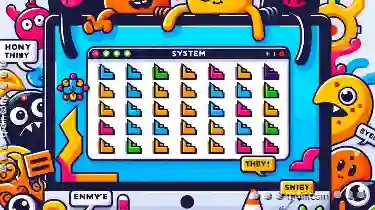When it comes to data analysis, the way you present your information can significantly impact how easily understandable and actionable the insights are. ...
 One of the most effective ways to display complex data is through a detailed view. This blog post will explore various layout options available in detailed views that can help in better data visualization and analysis. Here’s a breakdown into sub-points:
One of the most effective ways to display complex data is through a detailed view. This blog post will explore various layout options available in detailed views that can help in better data visualization and analysis. Here’s a breakdown into sub-points:1. Table Layout
2. Graphical Layout
3. Dashboard Layout
4. KPI Focused Layout
5. Drill-Down Capability
6. Mobile Responsiveness
7. Conclusion
1.) Table Layout
A table layout is one of the most traditional methods for presenting detailed data. It allows users to see all columns and rows at once, making it ideal for comparing multiple pieces of information side by side. However, managing large datasets can lead to clutter which might make it difficult to focus on key metrics or patterns.
Key Features:
- Comparability: Easy comparison between different data points across various dimensions.
- Scrolling Capability: Ideal for handling larger sets where a single screen cannot accommodate all data.
- Filtering and Sorting: Tools that allow users to sort the table based on specific columns, filter by keywords or date ranges, etc.
2.) Graphical Layout
Visual representations are often more effective in conveying complex information than tables alone. Graphs such as bar graphs, line charts, pie charts, and scatter plots can help highlight trends and outliers quickly.
Key Features:
- Highlighting Trends: Visual cues that draw attention to significant changes or consistent patterns over time.
- Space Efficiency: Saves screen space by condensing large amounts of data into a few visual elements.
- Interactivity: Allows zooming, panning, and other interactive features for deeper analysis.
3.) Dashboard Layout
A dashboard layout brings together multiple graphs, tables, and metrics in one place to provide an at-a-glance view of key performance indicators (KPIs). It’s particularly useful for real-time monitoring or managing multiple related data sets.
Key Features:
- Real-Time Monitoring: Displays live updates of critical business metrics.
- KPIs Consolidation: Concentrates vital statistics without cluttering the interface.
- Customizable Panels: Users can add, remove, and rearrange widgets to suit specific analytical needs.
4.) KPI Focused Layout
Focusing solely on Key Performance Indicators (KPIs) helps in highlighting the most important metrics directly from the data. This layout is ideal for management reporting where a quick glance at critical success factors is essential.
Key Features:
- Critical Metrics: Displays only what matters, typically top-level business metrics like revenue, profit margin, etc.
- Simplified Interface: Minimizes distractions to ensure focus on key performance indicators.
- Exportable Data: Often includes options to export data into other formats or for further analysis by external tools.
5.) Drill-Down Capability
A detailed view might start with a high-level overview but provide the ability to drill down into more granular details as needed, allowing users to explore and analyze deeper insights.
Key Features:
- Deep Dive Analysis: Users can click through from broad views to specific data points for more in-depth analysis.
- Customizable Views: Allows customization of what information is visible based on user needs or context.
6.) Mobile Responsiveness
With the increasing use of mobile devices for business operations, ensuring that detailed views are accessible and usable across platforms becomes crucial.
Key Features:
- Optimized Experience: Adaptable layouts that adjust to fit different screen sizes.
- Touch-Friendly Interface: Touchscreen controls where applicable, enhancing usability on tablets and smartphones.
7.) Conclusion
The choice of layout for a detailed view depends largely on the specific needs of your data analysis requirements, whether you are looking to present complex datasets in a digestible format or focusing on actionable business insights through key performance indicators. By combining multiple layouts as needed-such as integrating graphs with tables and having drill-down options-you can create an effective and versatile tool for managing and analyzing data.

The Autor: / 0 2025-05-07
Read also!
Page-
The Case Against Default Icon View: Prioritizing Content Over Cues
One of the most common ways to present information is through icons. Icons are graphical representations that often convey complex ideas or actions ...read more

System Folders: Why You Shouldn’t Modify Them
When it comes to managing files on your computer, understanding where certain important system folders reside can be crucial. These system folders, ...read more

Text File Compression: How Much Space Can You Save?
One of the most effective ways to manage and store large amounts of information efficiently is through compression techniques. This blog post will ...read more